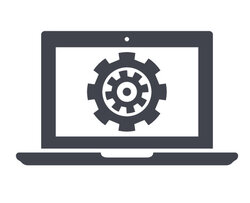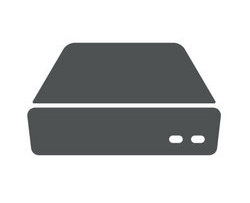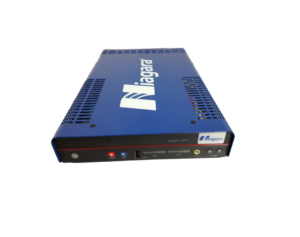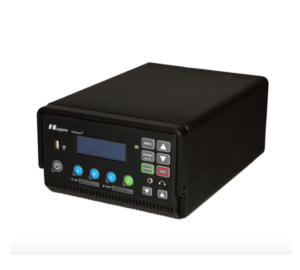Video Streaming Encoders 101
Encoders play a critical role in video streaming applications. They are used to improve video quality by ensuring the uploaded stream has the optimal compression and protocol characteristics. The following article focuses on hardware encoders, outlining how they benefit live streaming operations and the solutions available at Niagara Video.
An Overview of Video Encoders for Live Streaming Applications
Video encoding refers to the process of compressing and/or changing the format of a video. By compressing the raw video, streamers reduce the size of the file, making it easier to transmit over the Internet even with limited bandwidth. By changing the format of the video (i.e., transcoding), they ensure the uploaded video is compatible with different playback programs and services.
The process of encoding a video relies on the use of video codecs (i.e., video compression standards) and audio codecs. Some of the codecs and protocols to keep in mind include:
- H.264: common video codec for video streaming over the Internet
- MPEG 2: Video codec used for legacy broadcast, moving to HEVC
- HEVC: New video codec, will replace MPEG2 and H.264 eventually
- MPEG audio layer III (MP3) or Advanced Audio Cooling (AAC): standard protocol for audio-only streaming, also used with other video protocols
- HLS: a common protocol used to stream video from the streaming platform to the end-user device
- RTMP: the most common protocol, used for streaming to a CDN or video server

. Hardware vs Software Encoders
These standards, among others, are applied either by software or hardware, both of which consist of an encoder component (for video compression) and a decoder component (for video recreation).
 Software encoders are programs integrated into the devices used for the streaming (e.g., desktop, laptop, or another computing device). They are often used by novice streamers for their small setup and use requirements, low cost, and high customizability. The main disadvantage of using a software-based encoder is the lack of dedication to the encoding process; the encoder must share CPU or GPU power, memory, and other computer limits with other programs running concurrently on the system. However it is also important to understand that some software based systems like those offered by Niagara are reliable and offer a wide range of features.
Software encoders are programs integrated into the devices used for the streaming (e.g., desktop, laptop, or another computing device). They are often used by novice streamers for their small setup and use requirements, low cost, and high customizability. The main disadvantage of using a software-based encoder is the lack of dedication to the encoding process; the encoder must share CPU or GPU power, memory, and other computer limits with other programs running concurrently on the system. However it is also important to understand that some software based systems like those offered by Niagara are reliable and offer a wide range of features.
 Hardware encoders are dedicated processing devices that use a specialized algorithm to encode video and data for streaming purposes. They can use ASICs, FPGAs or DSPs. Some are more expensive while others that use consumer grade ASICs are less expensive they are generally less flexible than software encoders. High end systems are used by professional broadcasters for their better encoding performance and extremely low latency, including in regard to reliability and speed. Encoders that are less than $1,000 typically use a consumer ASIC typically intended for a TV. As the encoder is a separate component that is devoted solely to the encoding process, there is no risk of surpassing the computing device’s encoding limits but these have their limits as well.
Hardware encoders are dedicated processing devices that use a specialized algorithm to encode video and data for streaming purposes. They can use ASICs, FPGAs or DSPs. Some are more expensive while others that use consumer grade ASICs are less expensive they are generally less flexible than software encoders. High end systems are used by professional broadcasters for their better encoding performance and extremely low latency, including in regard to reliability and speed. Encoders that are less than $1,000 typically use a consumer ASIC typically intended for a TV. As the encoder is a separate component that is devoted solely to the encoding process, there is no risk of surpassing the computing device’s encoding limits but these have their limits as well.
Professional Video Encoder Solutions From Niagara Video
There is a broad selection of professional video encoder solutions available in today’s market. At Niagara Video, we offer the following encoder products:
. GoStream Encoders
The GoStream series of encoders exhibits durability and portability. They accommodate analog and digital inputs and multiple outputs, including Transport Stream (UDP/RTP), Adobe Flash (RTMP), Windows Media, and Apple’s HLS protocol. The models available include:
. 2200 Series Encoders

Similar to the GoStream series of encoders, the 2200 series of encoders is robust, portable, and durable. These encoders allow for high-quality live video streaming in AT&T Uverse, corporate, government, educational, and religious applications with little to no technical knowledge. They support component, S-video, and composite video inputs and Adobe Flash, Windows Media, MPEG-2, and MPEG-4 output protocols.
. 8000 Series Video Processors

The 8000 series of video processors is a low-cost, high-reliability solution for video processing applications. They use Linux SCX software to encode, transcode, and decode video files within a single unit.
. 9100 Series Encoders

The 9100 series of encoders supports analog and digital source inputs and Transport Stream, Adobe Flash, Windows Media, and HLS output protocols. They serve as an economical choice for live capture, encoding, and streaming applications.
. 9200 Series Encoders

The 9200 series of encoders offers high-density, high-performance multi-channel encoding and decoding capabilities for broadcasters, enterprises, and service providers. They support IP ingest or 4K/HD/SD SDI inputs and RTMP, DASH, UDP, RTP, and HLS output protocols.
. 9300 Series Encoders
![]()
The 9300 series of encoders is suitable for encoding and transcoding applications. They employ SCX Linux and SCX+ Linux software to accommodate a wider range of inputs and outputs.
Why Choose Niagara Video for Your Professional Video Streaming Needs?
At Niagara Video, we’ve supplied high-quality audio and video streaming products—including encoders—for nearly two decades. Some of the biggest and most well-known broadcasters, network solution providers, and content delivery services—who serve millions of audience members across the world—rely on our products for their video streaming needs. For customers starting their video streaming journey, we also offer helpful How-to guides.
For additional information about our hardware encoders and other products and how they can benefit your professional streaming operation, contact us today.
